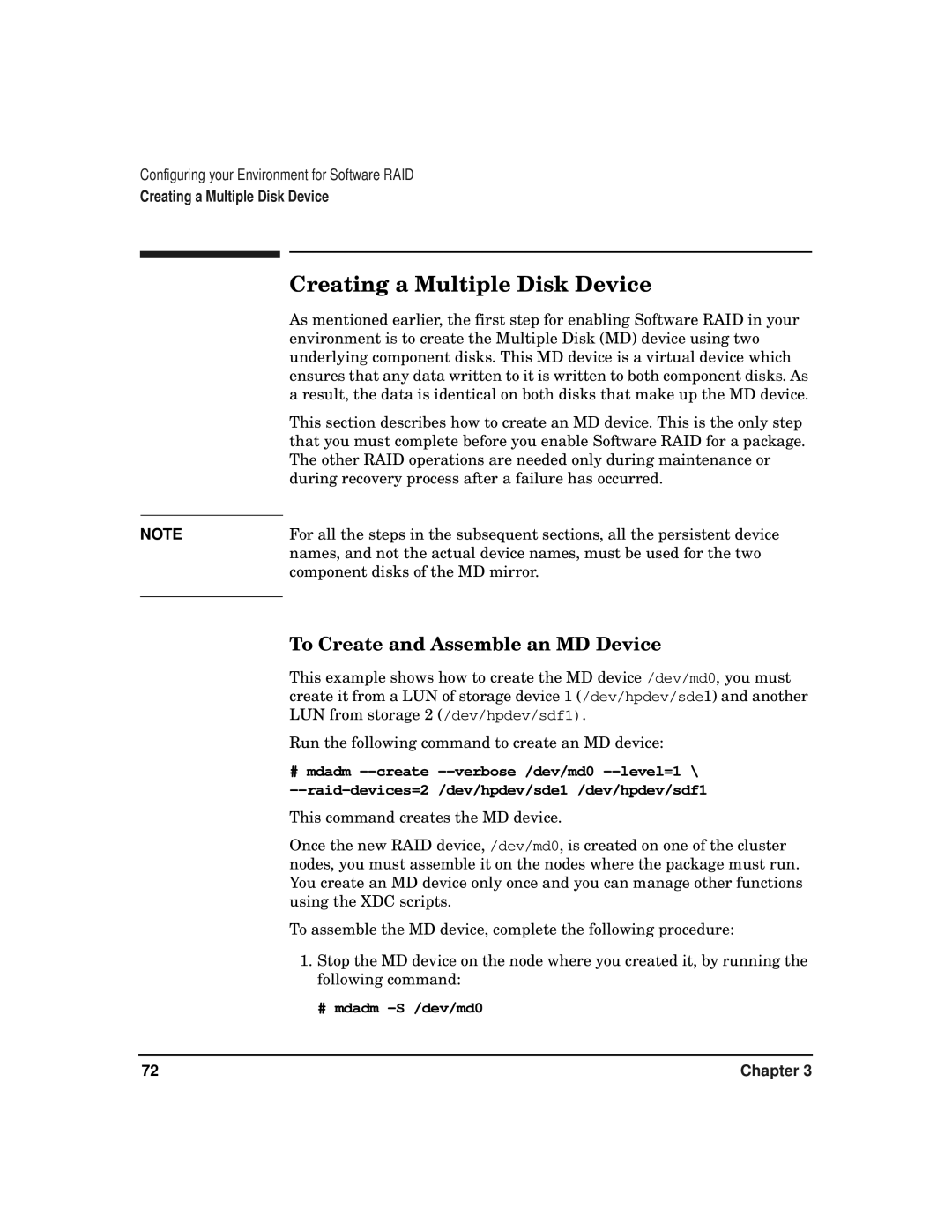
Configuring your Environment for Software RAID
Creating a Multiple Disk Device
| Creating a Multiple Disk Device |
| As mentioned earlier, the first step for enabling Software RAID in your |
| environment is to create the Multiple Disk (MD) device using two |
| underlying component disks. This MD device is a virtual device which |
| ensures that any data written to it is written to both component disks. As |
| a result, the data is identical on both disks that make up the MD device. |
| This section describes how to create an MD device. This is the only step |
| that you must complete before you enable Software RAID for a package. |
| The other RAID operations are needed only during maintenance or |
| during recovery process after a failure has occurred. |
|
|
NOTE | For all the steps in the subsequent sections, all the persistent device |
| names, and not the actual device names, must be used for the two |
| component disks of the MD mirror. |
| To Create and Assemble an MD Device |
| |
| This example shows how to create the MD device /dev/md0, you must |
| create it from a LUN of storage device 1 (/dev/hpdev/sde1) and another |
| LUN from storage 2 (/dev/hpdev/sdf1). |
| Run the following command to create an MD device: |
| # mdadm |
|
|
| This command creates the MD device. |
| Once the new RAID device, /dev/md0, is created on one of the cluster |
| nodes, you must assemble it on the nodes where the package must run. |
| You create an MD device only once and you can manage other functions |
| using the XDC scripts. |
| To assemble the MD device, complete the following procedure: |
1.Stop the MD device on the node where you created it, by running the following command:
# mdadm
72 | Chapter 3 |
